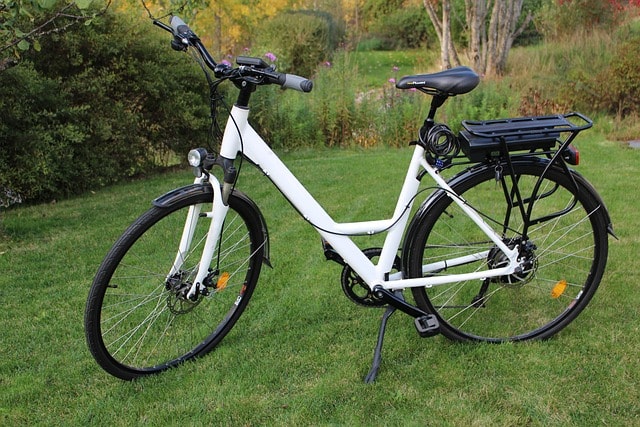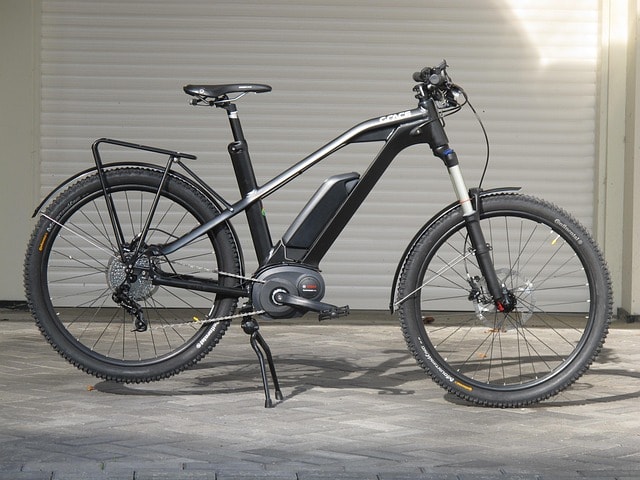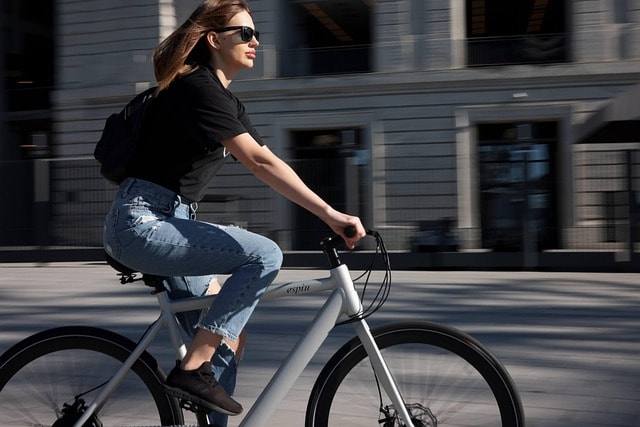If you’re wondering, "How much does it cost to charge an e-bike?" you're in the right place. Charging an e-bike usually costs between €0.06 and €0.35 each time. In this guide, you’ll find out what influences these expenses and learn ways to save money while keeping your electric ride ready to go.
Key Points
-
E-bike energy costs vary based on local electricity rates, battery capacity, and efficiency; being efficient can automatically save you money.
-
Charging at home is generally cheaper than public stations, with home costs being up to 60% lower, making it the more economical option.
-
Implementing strategies like charging your bike during off-peak hours and using smart chargers can save you money and prolong battery life.
Understanding E-Bike Battery Power Expenses

For electric vehicle enthusiasts, understanding battery power prices is key. The costs can vary based on several factors, including local electricity rates, battery capacity, and efficiency.
Knowing these factors will help you make informed decisions and manage your costs. This will provide you with the answers you need for financial planning and risk management. Note that these are key to success.
Factors Affecting Power Expenses
Electric vehicle charges, including e-bikes, are heavily influenced by local electricity tariffs. Higher local electricity rates mean higher overall charges to charge your electric ride. Battery size also plays a big role. Larger batteries require more energy to top up, so more cost.
Efficient top-up practices can reduce these costs. Using chargers that lose less energy during the process helps keep costs down. So, choosing the right charger and method is key to cost-effective electric vehicle use.
Typical Energy Expenses Across Europe
E-bike costs can vary widely across Europe:
-
Wealthy countries with high adoption of electric vehicles have higher energy costs.
-
In countries like Turkey, Georgia, and Kosovo, a full battery top-up can cost €4.05, making them some of the cheapest places to charge.
-
Public station fees can vary; some countries charge as little as 30p per kWh.
In other regions, like Ireland, costs can be much higher, reflecting the diverse pricing landscape across Europe. Knowing these regional differences will help you plan your journeys and manage your energy costs.
Comparing E-Bike Batteries to Car Batteries
While e-bike batteries are smaller and require less energy than a typical car battery, the principles of charging and cost management are similar. Just like with car batteries, it's important to pay attention to the charger specifications, including voltage and connection to the positive terminal, to ensure safe and efficient charging.
How to Pay for Charging and Finding the Best Deal
Most public charging stations allow users to pay via mobile apps or contactless cards, making the process readily accessible. To get the best deal, it's wise to compare prices in your local market and take advantage of any discounts or off-peak rates. Remember, forgetting to disconnect your bike after charging could lead to additional fees or penalties under the rules of the charging service.
Market Trends in E-Bike Charging
The e-bike charging market is rapidly evolving, with more providers delivering innovative solutions that focus on cost-effectiveness and convenience. As more users switch to electric vehicles, the availability of chargers and competitive pricing continues to improve, making it easier than ever to keep your bike powered and ready to ride.
Powering Your E-Bike at Home

Charging at home is convenient and cost-effective. With the right setup, you can have your electric ride ready for your next trip.
Here’s how to set up home stations and the costs involved.
Home Power Setup
Setting up a home station for your electric vehicle is easy. Here are the key points to follow:
-
Charging can be done directly through the port or by removing the battery and charging it separately.
-
Always connect the charger to the device before plugging it into a wall socket to avoid power surges.
-
Use only equipment approved by recognised testing labs to ensure safety.
Install your power station in a safe location, away from flammable materials and high-traffic areas. Having a qualified electrician assess your electrical system for compatibility with your charger will ensure a safe and efficient setup.
Expense Breakdown for Home Charging
The cost depends on the price per kilowatt-hour (kWh) and the battery’s capacity. Typically, charging uses between 250 and 750 watts, depending on the model and usage. Home charging is generally cheaper than public stations, as it avoids additional fees like convenience charges.
Public stations can be much more expensive. They can be up to 60% more than home charging. So, charging your bike at home not only saves you money but also ensures your electric vehicle is ready to go whenever you need it, without the hassle of finding a public station.
Public Stations for E-Bikes

Public stations are becoming more common, especially in urban areas across Europe. These stations are for those who don’t have a home setup.
Availability of Public Stations
Public stations for electric two-wheelers are increasing across Europe as the number of users grows. With over 5,000 public stations now available in European cities, the infrastructure for electric vehicle users is getting better.
This expansion makes it more accessible and convenient for riders to have their rides handy, charged, and ready to use.
Public stations charge more than home setups. In Europe, the average cost to charge an electric vehicle in public locations can be much higher than home rates, sometimes up to 60p per kWh. For example, Germany has the highest average cost to charge an electric vehicle at €25.73 per full battery top-up.
Home charging is cheaper, as public stations can add convenience fees that increase the overall cost. On average, public stations can be up to three times more expensive than home charging, depending on the location and charger type.
Saving Money on E-Bike Charging

There are several ways to save money on charging. By implementing these methods, you can reduce your electricity bills and get the most out of your battery.
Charging during off-peak hours can reduce your expenses, as electricity rates are lower during these times. This also lessens stress on the grid and supports renewable energy.
Smart plans and energy apps can help you schedule your charging to take advantage of these lower rates.
Smart chargers are a worthwhile investment for electric vehicle owners. They optimise power times, reduce energy waste, and lengthen battery life by preventing overcharging. Features like automatic shutoff and temperature monitoring make them a safer option, protecting your battery from damage.
Using smart chargers enhances efficiency and prolongs battery life, which lowers electricity bills and decreases the need for frequent battery replacements.
Government Incentives and Discounts
Many governments offer incentives and discounts to encourage the use of electric vehicles, including e-bikes. For example:
-
The EV Home Charger Grant provides up to €300 for purchasing and installing a home charger.
-
Suppliers may offer discounts on green electricity.
-
Incentives are available for charging your bike during times of cheapest electricity.
These incentives can reduce the price and make it more affordable.
Extending Battery Life
Extending the life of your battery is not only cost-efficient but also eco-friendly. Proper energy replenishment methods and regular maintenance can enhance battery longevity and performance.
Proper practices can lengthen the life of your battery. Charge the battery when its level drops between 10% and 80% to optimise longevity. Charging in a controlled environment, away from extreme temperatures and moisture, is also important for optimal performance.
Using a charger that follows the manufacturer’s specifications prevents damage and optimises power transfer. Investing in a high-quality charger can further increase battery life by automatically providing optimal conditions.
Regular maintenance is key to prolonging the life of your battery. Don’t leave the battery unattended to prevent potential hazards. Store the battery at around 60% charge when not in use for long periods to keep it healthy.
Check the battery’s charge level regularly, especially during storage, to prevent issues and keep it in good condition.
The Environmental Impact of Charging

Electric two-wheelers offer a sustainable alternative to traditional vehicles, significantly cutting carbon emissions. Proper power management and battery care can further lessen environmental impact, contributing to a greener future. We will explore how electric bikes reduce carbon footprints and examine sustainable energy options.
Reducing Carbon Footprint
Switching to electric two-wheelers reduces carbon emissions by 14.8 grams per kilometre compared to traditional vehicles. They emit less than petrol cars. Studies show they can produce up to 90% less carbon emissions during their lifecycle compared to gasoline-fueled cars.
If urban transport shifted 15% of trips to electric two-wheelers, the benefits would be:
-
12% reduction in carbon emissions
-
Reduced fossil fuel consumption by using electric rides for short trips
-
Lowering an individual’s carbon footprint by up to 84%
Solar charging stations are a sustainable way to enhance their eco-friendly profile. Solar energy reduces dependence on fossil fuels and promotes clean energy usage.
Integrating solar energy systems for charging can further minimise the environmental impact by using renewable energy sources.
Choosing the Right Charger
Choosing the right charger is crucial for safe and efficient use. Matching the charger to your battery specifications prevents damage and optimises performance.
Chargers differ in voltage and connector types, which are important for compatibility and safe operation:
-
Most chargers operate at 24V to 52V.
-
Higher capacity models require chargers that match their voltage ratings.
-
Using a charger with the wrong voltage can cause overcharging or failure to charge the battery at all.
When choosing a charger, match the charger’s specifications—including voltage, positive terminal and negative terminal connections, and connector type—to the battery’s specifications. This ensures safe and efficient power transfer, preventing damage.
High-quality chargers from well-known brands ensure reliability and may come with a warranty to protect your investment. When choosing a charger, make sure of:
-
Voltage compatibility
-
Amperage compatibility
-
Connector type compatibility
-
Proper clamp and cable connections to terminals
This will prevent any damage to your battery and ensure optimal operation.
Choosing a reliable charger from a reputable brand is essential to ensure safe, efficient, and long-lasting power for your e-bike. Here are some of the top brands trusted by electric vehicle enthusiasts:
-
Bosch – Known for high-quality chargers compatible with a wide range of e-bike batteries, Bosch offers robust and efficient solutions.
-
Shimano – Offers chargers designed specifically for Shimano e-bike systems, known for reliability and safety features.
-
Ansmann – A popular brand providing smart chargers with features like temperature regulation and auto shut-off.
-
RavPower – Known for portable and versatile chargers for various battery types, ideal for on-the-go power.
-
BMZ – Specialises in battery management systems and chargers that optimise battery life and performance.
When choosing a charger, always make sure it matches your e-bike’s battery specifications, voltage, and connector type to ensure compatibility and safe use. Investing in a quality charger from a reputable brand can save you money in the long run by protecting your battery and improving overall efficiency.
For more details, you can visit the manufacturer’s website or contact customer service for instructions and advice on proper charger use. Remember to unplug the charger and disconnect cables after charging to maintain battery health and safety.
Frequently Asked Questions
What factors affect the cost of charging an e-bike battery?
This is mainly influenced by local electricity tariffs, battery capacity, charging efficiency, and the type of charger used. Understanding these factors can help you manage your bike charges.
How much does it typically cost to charge an electric bike in Europe?
Typically, the price is around €4.05 to fully charge an e-bike in Europe, but this can vary greatly by country and can reach up to 60p per kWh at public stations. Customers should check local rates for accurate costs when charging their bikes.
Is it cheaper to charge an electric bike at home or at a public charging station?
Charging an e-bike at home is generally cheaper than at a public charging station, as home electricity rates are lower and there are no convenience fees. Public chargers may also include additional service fees or require access via apps or cards.
What are the benefits of using a smart charger for my electric bike?
Using a smart charger for your e-bike optimises charging efficiency, prevents overcharging, and includes safety features like auto shutoff and temperature monitoring to prolong your battery’s life. It also helps you save money by reducing wasted energy and managing charge cycles effectively.
What is the responsibility of the user when charging an e-bike?
Users should follow all instructions for safe charger use, ensure proper connection to positive and negative terminals, unplug the charger when not in use, and avoid leaving the bike parked connected for extended periods to prevent overcharging and potential damage.
Can I access charging details and monitor my charging session?
Many modern chargers and apps enable users to access data on charging status, duration, and cost, helping you control and manage your charging sessions effectively.
What should I do if I experience issues with my charger or battery?
Refer to the charger’s instructions, contact customer support, and avoid using damaged cables or clamps. If problems persist, seek professional assistance to avoid risks or suspension of service.

